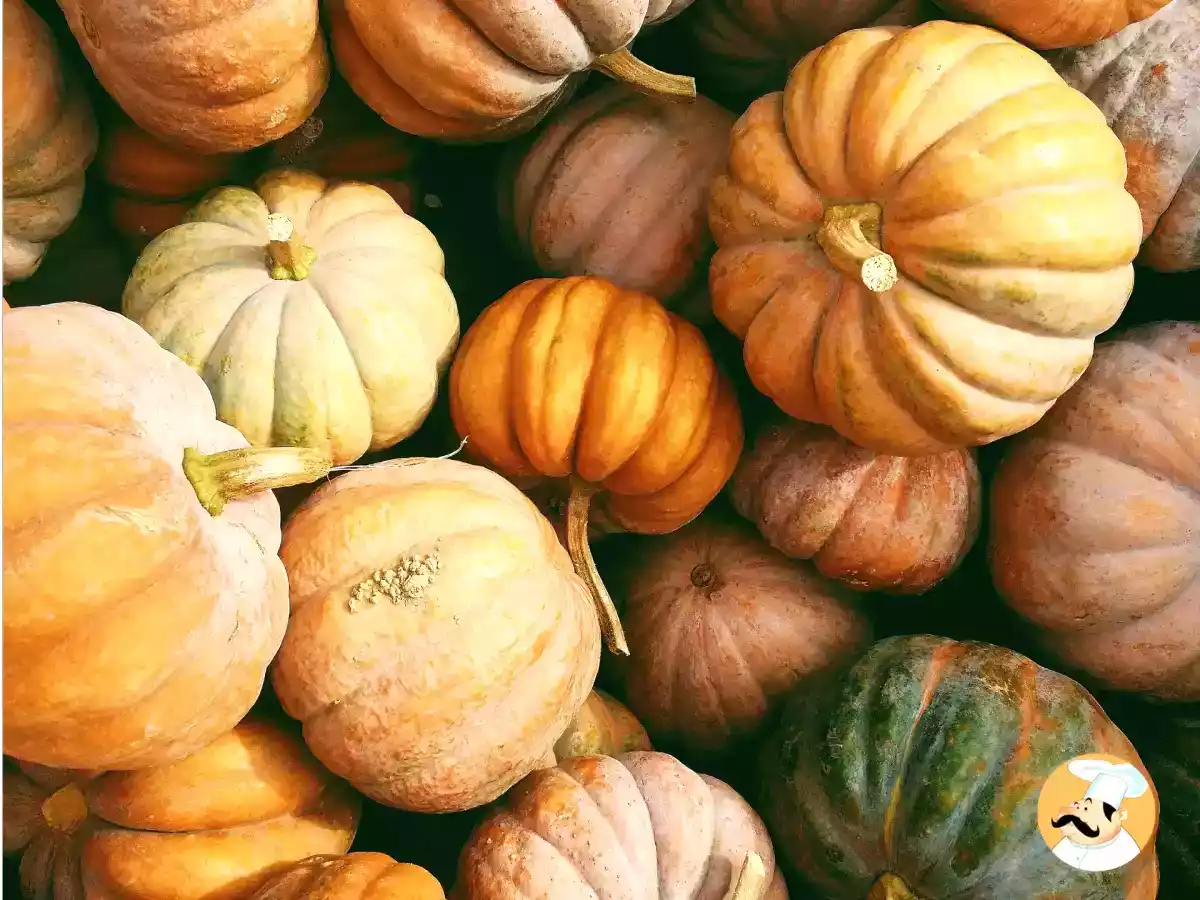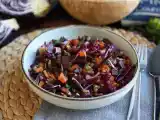Beware, not all pumpkins are the same! Learn about the varieties and their uses in cooking

Pumpkin is a very versatile fall vegetable, prized for its sweet flavor and nutrient-richness. Its orange flesh, rich in beta-carotene, is a real boon for eyesight and the immune system. But pumpkin is not only a healthy food, it is also an extremely versatile ingredient in the kitchen, capable of transforming simple dishes into true delights.
There are several varieties of pumpkin, each with specific characteristics that make them ideal for different uses in the kitchen. Let's look at some of the best-known qualities, their benefits and how to use them.
Butternut squash (or violet squash)
The butternut ( or violet) squash, with its unmistakable shape reminiscent of a giant pear, is one of the most beloved and popular varieties in cooking. A member of the Cucurbitaceae family, this squash is distinguished by its deep orange flesh and sweet, slightly nutty flavor, reminiscent of the texture of butter.
- Benefits: It is rich in beta-carotene, which is converted to vitamin A in the body, essential for healthy skin and eyes. It also contains vitamin C, which is useful for the immune system, and potassium, which helps keep blood pressure under control.
- Kitchen uses: Perfect for soups, velvety soups, pasta dishes and purees. Because of its creamy texture, it is great for making sauces or for roasting and serving as a side dish.
Delica Pumpkin
Native to Japan, the Delica pumpkin has gained a prominent place on Italian tables because of its sweet flavor and versatility in cooking. This variety, which is earlier than others, has a rounded shape, a dark green, sometimes slightly fluted skin, and a deep orange flesh.
- Benefits: Like Butternut, it is rich in antioxidants such as beta-carotene and is low in calories. It is also an excellent source of vitamin e (especially vitamin E), minerals such as calcium, potassium, magnesium and phosphorus.
- Uses in cooking: Ideal for baking, perhaps seasoned with spices or herbs. It also lends itself to making pumpkin gnocchi and pumpkin desserts.
Mantuan Pumpkin
The Mantuan pumpkin, also known as the "Priest's Hat pumpkin," is a popular variety. This pumpkin is distinguished by its rounded, flattened shape and thick, wrinkled, grayish-green skin. The bright orange flesh is firm and sugary, making it ideal for many preparations.
- Benefits: Despite its rich, sweet flavor, butternut squash is low in calories, making it perfect for those seeking a satiating but light food. The dense pulp is rich in fiber, which helps improve digestion and keep blood sugar levels stable.
- Uses in the kitchen: First courses, soups and velvety soups, baking and desserts.
Hokkaido Pumpkin
Native to the Japanese island of Hokkaido, the Hokkaido squash, also known as Uchiki Kuri, has earned a place of honor in cuisines around the world. It is a small, roundish variety with a bright red or orange skin. A distinguishing feature is that it can also be cooked with the skin on. The flesh of Hokkaido squash is a beautiful deep yellow color and has a soft, grainy texture. Its flavor is sweet and mild, with notes reminiscent of chestnut, making it a versatile and popular ingredient in many culinary preparations.
- Benefits: In addition to being rich in fiber that aids digestion, it contains vitamins A, C and B6. It is also a good source of magnesium, which contributes to bone health.
- Uses in the kitchen: Thanks to its edible skin, it is very practical for quick preparations such as soups, stews or for being roasted in the oven. The sweet flesh is also well suited to pumpkin pies and breads.
Pumpkin Spaghetti
Spaghetti squash, is a variety of squash characterized by a fibrous flesh that, when cooked, separates into long , spaghetti-like strands. This unique characteristic makes it a versatile and fun ingredient to use in cooking, offering an original and nutritious alternative to traditional pasta. Spaghetti squash can come in a variety of shapes and colors, from yellow to deep orange.
- Benefits: This variety is low in calories and carbohydrates, making it an excellent choice for those on a light diet. It is rich in fiber and B vitamins, which support energy metabolism.
- Uses: After cooking, the pulp can be pulled out with a fork to make "mock noodles." It is a good alternative to pasta for those who want a light dish that can be topped with sauces, pesto or vegetables.
Conclusion:
The diversity of pumpkin varieties results in a kaleidoscope of nutritional properties. While some excel in beta-carotene content, others are rich in fiber and B vitamins. Each cultivar offers a unique nutritional profile, which, combined with different textures and flavors, makes pumpkin an extremely versatile food. Experimenting with different varieties not only enriches the palate but also contributes to a more balanced and complete diet, promoting the body's overall well-being.

Butternut squash tartiflette - a cheese and bacon delight

Butternut burgers (without bread!)

Chocolate and butternut squash cake

Irresistible butternut squash velouté

Pumpkin with shrimps - the brazilian "camarão na moranga"

Pumpkin and bacon pasta

Colorful and delicate pumpkin risotto

Baked pumpkin and chickpeas with rosemary and feta

Vegan quinoa stuffed butternut squash with pomegranate

Pumpkin and ricotta sauce, perfect for serving pasta or filling ravioli!

Pumpkin and sausage meat pasta

Pumpkin spice latte with homemade pumpkin spice syrup!

Pumpkin pie, for a simple and effective meal

Homemade pumpkin spice syrup, perfect for your fall/winter drinks

Lentil, butternut, red cabbage, beet and parsley salad (perfect for fall/winter)

Butternut squash and red lentil soup
 Daniele Mainieri
Daniele Mainieri
Comments